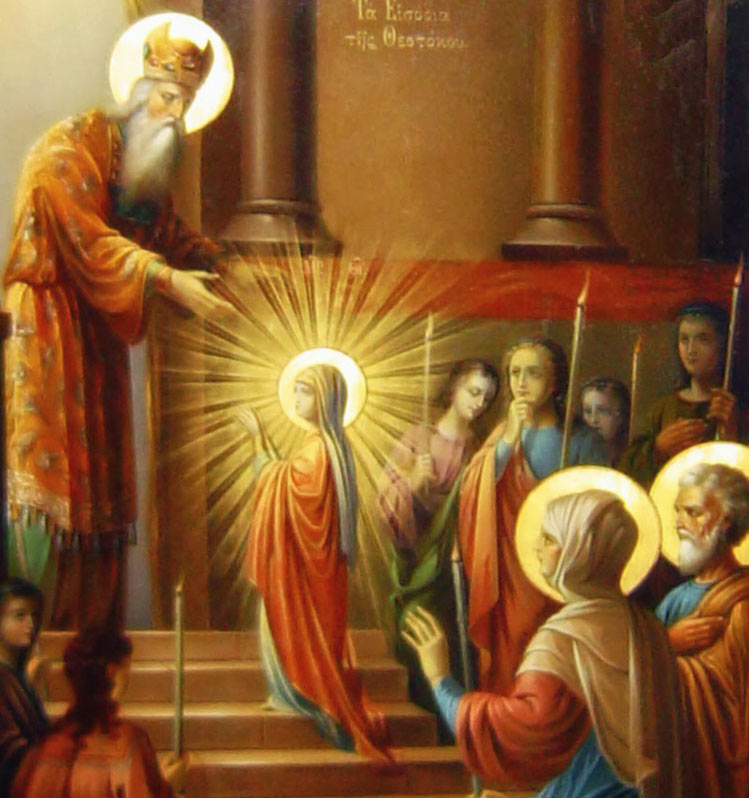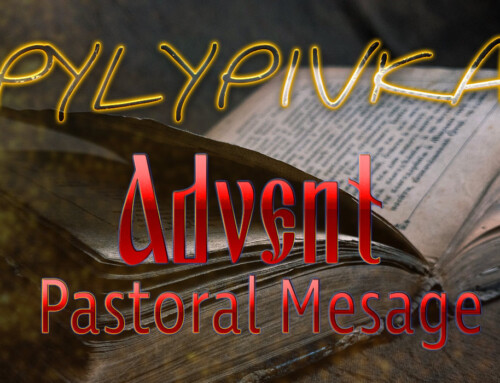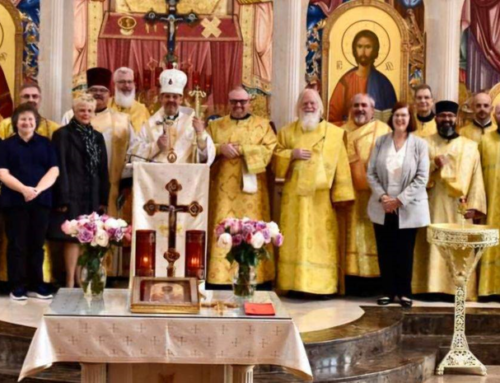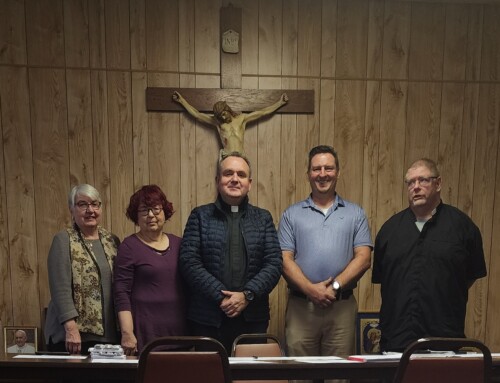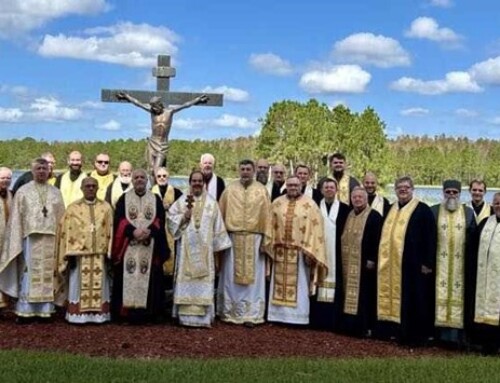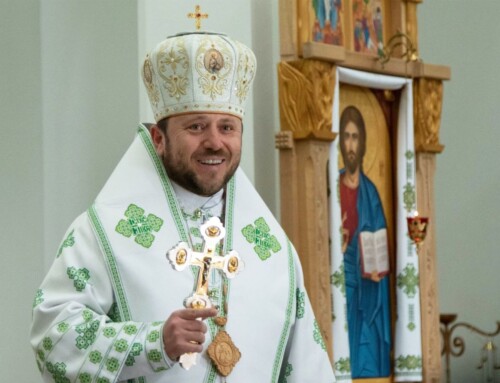It’s probably safe to say that most people would prefer to read a story than an academic treatise. Both forms might be conveying the same point, but a narrative is likely to be more compelling – and more memorable – than a dissertation.
The Entrance of the Theotokos into the Temple, the Great Feast we celebrate today, rests on such a narrative. The story is found in The Protoevangelion of James, a second-century telling of the birth and infancy of the Theotokos. We know that in the first and second centuries ad a number of books were written about Christ and His Mother. Some were accepted by all the local Churches as presenting a true portrait of the Messiah. Others were rejected because the Christ they portrayed was not the one who had been preached by the apostles. In some He was a Gnostic philosopher, in other a magician. We call these “apocryphal gospels” and do not see them as the voice of the Holy Spirit to us. Still other books, The Protoevangelion of James among them, were revered by the Christians of their day but not considered canonical Scriptures because their content was not at the heart of the apostolic proclamation or the early Creeds. Their subject matter treated things like Jesus’ physical appearance or the early periods of Christ’s life not covered in the Gospels. They may be true but not central to our faith.
The Source of This Feast
The prayers and icon of this Feast focus on two elements of the Protoevangelion story. In the first, Mary at the age of three is presented to God in the temple at Jerusalem accompanied, as the text reads, “by the daughters of the Hebrews that are undefiled.” There “the priest received her, kissed her and blessed her.”
The second vignette is shown in the upper right hand corner of this icon. There Mary sits in the innermost sanctuary of the temple, the Holy of Holies, ministered to by an angel. According to Jewish Law, no one entered the Holy of Holies: “only the high priest entered the inner room, and that only once a year, and never without blood, which he offered for himself and for the sins the people had committed in ignorance” (Heb 9:8). It is unthinkable that a child would be not only allowed there but actually live there as the Protoevangelion avows.
In the Epistle to the Hebrews we are given a reason why no one was allowed into the Holy of Holies: “The Holy Spirit was showing by this that the way into the Most Holy Place had not yet been disclosed as long as the first tabernacle was still functioning” (Heb 9:9). By placing Mary in the Holy of Holies, the Protoevangelion is saying that the way into the Holy Place – the presence of God – now is disclosed. It is Christ, who would be incarnate in the womb of this same Mary the Theotokos. For this reason the story and its celebration have been embraced by the Tradition as affirmations of the Gospel.
Mary’s coming into the temple is portrayed as an “Entrance” on this feast in the Christian East rather that as a “Presentation” as in the West. This term puts us in mind of things like the “Great Entrance” at our Divine Liturgy or the Entrance Procession in the Western rites. Her coming is not the blessing of an insignificant child given in a “side chapel,” as it were, but a festive “prelude” or “overture” inaugurating the main event, the New Testament itself.
Our celebration of this feast focuses on Mary as the temple of the incarnate God, the one for whom the Jerusalem temple was only a prefiguration. After their entry with Christ into Jerusalem His disciples came up to Him to call His attention to the temple and the buildings in its compound. Jesus replied, “’Do you see all these things?’ he asked. ‘Truly I tell you, not one stone here will be left on another; every one will be thrown down’” (Mt 24:2). This feast celebrates the fulfillment of His prophecy. God’s people will no longer reach heaven via Jerusalem; rather the heavens have been opened to us and God’s temple, the Theotokos, is become for us the way to heaven through her childbearing.
“Hail, Full of Grace”
Perhaps the most popular hymn of this feast is the kontakion, O katharotatos naos, which summarizes in a few lines the theology we have been presenting. It reads: “The most pure Temple of the Savior, the most precious and bright bridal chamber – the Virgin, sacred treasury of the glory of God – enters today into the Temple of the Lord, bringing with her the grace of the Most Holy Spirit. Wherefore, the angels of God are singing: ‘This is the heavenly Tabernacle!’” In this hymn two teachings are affirmed. Mary is proclaimed by the angels as “the heavenly tabernacle.” The tabernacle, we know, was the portable holy place which the Hebrews brought with them in the desert until they reached the promised land. It was rendered into a more permanent form as the temple. Now Mary, not any building, is the holy place where God dwelled.
Secondly we are told that Mary entered the temple “bringing with her the grace of the Most Holy Spirit.” People went to the temple to encounter God, to receive His blessings. Mary, instead, brings God’s grace with her. She is proclaimed as “full of grace,” even as a child, by the angels themselves. This feast is thus for the Eastern Churches what the Immaculate Conception is to the West: a celebration of the holiness of Mary, sanctified from her earliest days by the Most Holy Spirit who dwelt in her.
As we have said it was unthinkable that a child, or anyone for that matter, should enter the Holy of Holies. But it is Mary’s rightful place as the woman full of grace who would contain within her innermost self the Uncontainable One. There she remains in the Holy Places of our churches: the Platytera between earth and heaven, the foremost worshipper of the Lord whom she bore.

